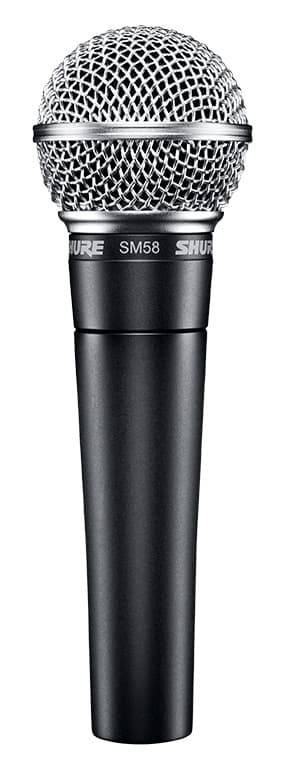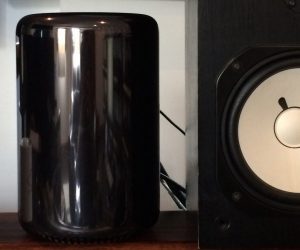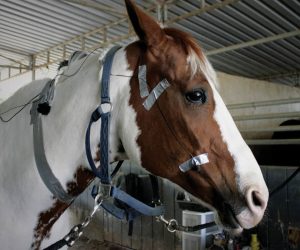
Shocking Secrets
Shure’s SM58 has been dropped from great heights, but its sales haven’t. It’s the real stuff of legends.
McDonald’s has its special sauce, KFC the secret herbs and spices… Shure has a pneumatic shockmount. It’s not as saucy as other company secrets but, clad in a clandestine layer of 228 impenetrable mathematical equations, it has turned the SM58 into not just a cult piece of gear, but a ubiquitous one.
The nature of its ubiquity is more than anecdotal, the Professional Audio Manufacturers Alliance places Shure as the number one seller of microphones in North America. Not in small part due to the success of the SM58. Putting the success of a microphone down to a shockmount that’s both difficult to understand and hidden from view doesn’t quite sum up the path to ubiquity. So let’s start at the beginning.
The genesis of the SM58 began well before people started singing into their ice cream cones. In 1938, 13 years after Sidney Shure first started shipping radio kits around the country, the company filed a patent for the world’s first single cartridge unidirectional, dynamic microphone. It was Benjamin Baumzweiger (later changing his name to Bauer), the chief engineer at Shure, who developed the design. Up to that point every unidirectional microphone design (think any microphone that is preferential to sound coming from one ‘uni’ direction) had been achieved by using two transducers. This original principle is still in use today in all multi-pattern condenser microphones, using the sum and difference of the two transducers to create all your favourite heart or number-shaped polar patterns.
TWO FOR ONE
But why use two, if you can do the same thing with one? Fewer unique parts is a catch cry of the manufacturing industry. Not just because it typically costs less to manufacture, but because, as Chad Wiggins, Shure Wired Systems Category Director, put it, “It improves consistency. Each part has its own unique tolerance, you stack up tolerances on 12 parts, you’re going to get more variability than if you stack up tolerances on five.”
So Baumzweiger invented the Unidyne cartridge, one capsule to conquer them all — US Patent No 2,237,298. The essence of the Unidyne design is relatively simple. I say, relatively, because the concept is easy to get your head around, but the execution is not.
Single capsule microphones are all omnidirectional by default. Sound waves will curve and bend from every direction to get to the diaphragm. So even waves originating from behind a capsule will bend right round to the front of the diaphragm and shake things up a little. The Unidyne capsule proposed a new solution. If sound waves coming from behind the diaphragm were going to hit the front of it no matter what you do, you need something to cancel them out. So Baumzweiger proposed a resistance network that would take part of the sound coming from the rear and delay it in time so it would arrive at the back of the diaphragm at exactly the same time the rest of the sound would hit the front. This would effectively cancel out those unwanted sounds coming from the rear.
It’s a simple concept that has been repeated in every dynamic microphone since its debut in Shure’s Model 55 microphone, including the SM58.


UP TO MILSPEC
Soon after the Unidyne’s debut, World War II came along, and Shure started using its expertise to support the war effort. Throat and headset microphones for aviators, microphones for oxygen masks, battle announcement mics for the military were all developed in a couple of years but have helped shape Shure’s direction ever since. The company had to adhere to the military’s strict MILSPEC standards of reliability, but since he’d spent money buying all the test equipment anyway, Sidney adopted the military standards as Shure’s own from then on.
Ever since then, people have been dropping Shure microphones from great heights, rolling over them in Mack trucks, and trying to drown them.
There are plenty of SM series urban legends. In 1976, the world’s smallest dynamic microphone was introduced — the SM11 — and NASA duly stuck it to the outside of its spacecraft and sent it up on 25 missions. It eventually stopped working, and when NASA brought it in for a checkup the fault was in the cable, not the microphone.
In the wake of Hurricane Katrina an SM57 that had been sitting in flood waters for two weeks was found as the waters receded. After a towel rub and some time in the sun it worked just fine.
Whether you believe these tales or not is probably proportional to the number of times you’ve dropped an SM58 on the ground and familiarised yourself with its indestructible composition firsthand.
Even the President of the United States will only use an SM57, well, two of them to be precise. There’s just no other mic the White House trusts more, having used a pair to deliver every presidential address for the last 40 years. There’s even a special SM57VIP dual microphone kit if you had the urge to double up just like the Prez.
THE RUBBER HITS THE ROAD
Durability has contributed to the legend of the SM58. But here’s where the rubber, or shock absorbing material of choice, hits the road. A standard condenser diaphragm is about 2.5 microns thick, a dynamic is about 20 times that, to be able to mould it into shape. Still ridiculously thin. They call it a ‘micro’-phone for a reason. Even smaller is the amount the diaphragm moves under acoustic response. It’s imperceptible, even to a high-speed camera. Only by laser scanning the surface of a diaphragm can you pick up these tenth-of-a-micron movements. Whack the handle with a mallet though, and you can see the diaphragm move. So handling noise has far greater potential to disrupt the diaphragm than sound does. See the problem?
When you hold a handheld dynamic microphone like the SM58 upright so the ball is on top, the diaphragm moves up and down in response to sound. Side to side movements have far less impact on the sound, maybe if you go fast enough you might induce wind noise. But the diaphragm moves up and down to create voltage, so that’s the plane of concern.
We’re also not necessarily talking about big movements. Remember, the diaphragm of a microphone responds to tiny pressure differences. So rather than responding to being swept through the air, handling noise is made up of all those vibrations your hand transmits to the diaphragm by moving your fingers, clapping or thumping your hands against the microphone casing. Obviously foam and rubber can do a pretty good job at isolating a lot of things, but trying to calculate the expected load to isolate a studio is hard enough let alone calculating it for something that’s getting handled. Can you imagine trying to isolate a studio located in a tumble dryer?
Ernie Seeler was an absolute genius… so meticulous about his craft you can track his bathroom breaks by the rare 10-minute gaps in his lab notebooks


SHOCK TACTICS
Most microphone manufacturers rely on shock absorbing material to reduce handling noise. For instance, Heil’s PR22 handheld, which made a big buzz about its Iso Band internal suspension system (US Patent No 8,189,842), still relies on a Sorbothane rubber cup to reduce vibration. No one has surpassed the efficiency of the pneumatic shockmount Shure engineer Ernie Seeler developed with the Unidyne III capsule in 1959 (US Patent Nos. 3,132,713 and 3,240,883).
Ernie Seeler was an absolute genius. One of those rare characters so meticulous about his craft you can track his bathroom breaks by the rare 10-minute gaps in his lab notebooks. In a time well before computer simulators, even calculators, Seeler took three to four years with a slide rule, pen and paper to come up with the 228 equations an engineer would need to design a working pneumatic shockmount. Shure still has all his notebooks, hundreds of them, each documenting a few months of his tenure, locked away in banker’s boxes.
“We’ve had a couple of acoustical engineers over the past few years who’ve gone deep into the books and vicariously relearnt the original science through these old lab manuals,” said Chad Wiggins.
The original science is based around the idea that beneath the diaphragm and voice coil it’s glued to, there would be two chambers of air. They would act like cushions with a specific amount of resistance in between. The amount of resistance defines how fast air can flow between the two chambers: too much and the chambers would just decompress and clunk together; too little and it would be too rigid. But if you calculate the volumes and resistance just right, you get a perfectly functioning piston that absorbs most handling noise. And it works a treat.
So meticulous was Seeler, that even half a century on, “The pneumatic math hasn’t really changed,” said John Born, Associate Product Manager for wired microphones. “The formulas haven’t changed, the values may adjust slightly to do a part change.” Even when the Beta 58 capsule was designed, the principles of the shockmount stayed the same, just the values changed. Born: “You can’t develop a perfect supercardioid capsule and then simply put the pneumatic shockmount on it. Because the second you vent to create that other cavity, you’re affecting the acoustic response. So you have to tune and make the pneumatic shockmount as you’re tuning and making the cartridge because they’re integrated and inter-related.”
Although microphone manufacturers the world over have used the original Unidyne concept to create their own dynamic mics, and you could probably drop a bunch on the ground and have them survive, none can match Seeler’s pneumatic shockmount for dealing with handling noise. He’s the real legend behind the SM58.

















RESPONSES